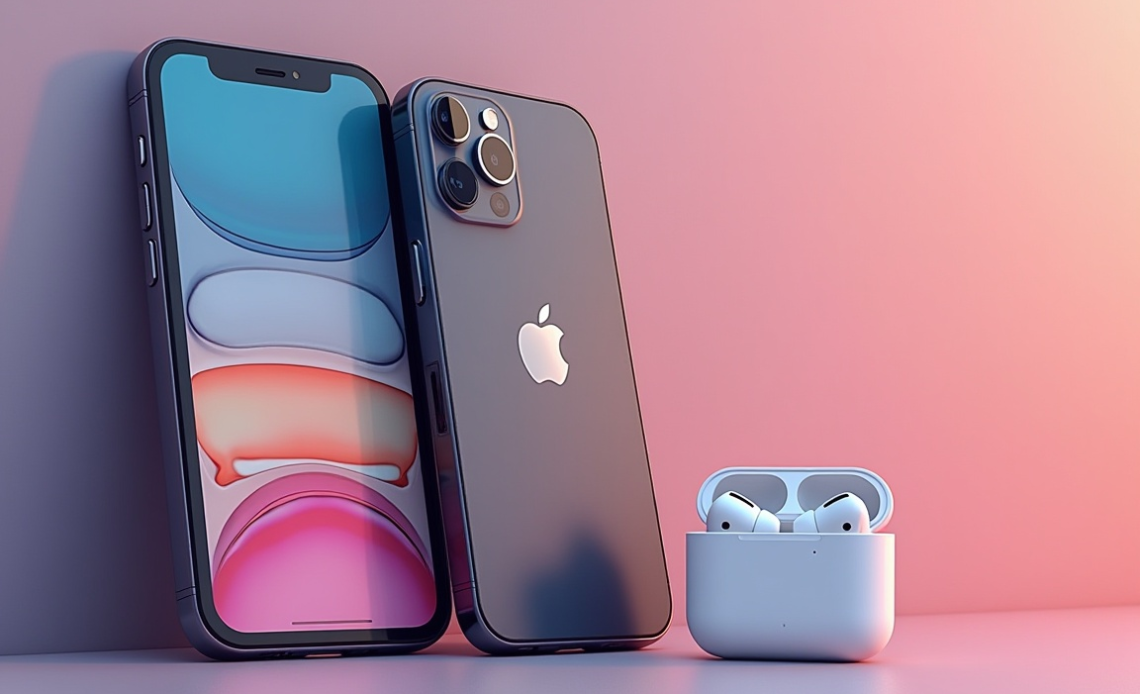
Apple will showcase its biggest hardware refresh in years at its product launch on Tuesday, Sept. 9. The centrepiece will be the iPhone 17 range, featuring four models, including an ultrathin iPhone 17 Air.
Alongside the new phones, Apple will also reveal updates to the Apple Watch, AirPods, and other devices. The company is doubling down on hardware as it navigates an artificial intelligence gap compared to rivals.
This launch marks the beginning of a three-year cycle of iPhone redesigns, setting the stage for future foldable and glass anniversary editions.
iPhone 17 Air introduces ultrathin design at 5.5 millimetres
Apple is reshaping its smartphone portfolio with the iPhone 17 Air, which debuts a body just 5.5 millimetres thick, about a third slimmer than the iPhone 16 Pro.
The thinner frame comes with compromises, including reduced battery capacity and a single rear camera placed in a pill-shaped bump.
The Air will feature the same A19 processor as the base iPhone 17, a 6.6-inch display with ProMotion support, and a USB-C port. However, it cannot accommodate physical SIM cards, pushing users towards eSIMs.
It will also integrate Apple’s in-house Wi-Fi chip and C1 modem, which previously powered the iPhone 16e.
Positioned between the base and Pro models, the Air continues Apple’s “Air” branding tradition from MacBooks and iPads.
With only a few hundred dollars separating it from the Pro models, its niche appeal may test consumer willingness to prioritise form factor over higher camera specifications and stronger batteries.
Pro models redesigned with new camera system and aluminium frame
The iPhone 17 Pro and 17 Pro Max will bring Apple’s first major redesign since the iPhone 12 Pro. Their new rear camera system spans the top third of the device, paired with a cutout section doubling as a wireless charging area.
Key upgrades include the A19 Pro processor, improved battery life, a telephoto lens upgrade from 12 megapixels to 48 megapixels, and a variable aperture system.
Users will also gain simultaneous front-and-back video recording and the largest selfie camera enhancement in iPhone history.
Apple is moving back to an aluminium frame from titanium, citing improved weight balance and better heat dissipation. Screen sizes will range from 6.3 inches for the iPhone 17 and 17 Pro to 6.9 inches for the Pro Max.
According to Bloomberg, these design changes mark the start of a three-year roadmap that will eventually include a foldable phone in 2025 and a glass-bodied 20th anniversary iPhone in 2027.
New Apple Watch models bring upgraded chips and features
The Apple Watch Ultra 3 will arrive with a larger display, a new S11 chip, a 5G Redcap modem, and satellite connectivity for texting and emergency use. This upgrade aligns with Apple’s effort to compete against Garmin in the premium smartwatch category.
The Apple Watch Series 11 will retain the redesign introduced in Series 10, adding brighter displays and adjusted colour options. Apple’s budget-friendly Watch SE will also receive a faster chip and new displays, maintaining its $249 price point.
In the health category, Apple is preparing to introduce a paid Health+ service in 2025, powered by AI, with features including a digital health assistant. Hypertension detection remains under development due to regulatory hurdles.
AirPods, Vision Pro and new accessories extend Apple’s ecosystem
Apple will refresh its audio lineup with the AirPods Pro 3, the first update in three years. These will include heart rate monitoring, a smaller charging case, and new pairing technology.
A live translation function will also be added, building on the language features introduced in iOS 26.
Other updates in the pipeline include AirTag 2 with better location accuracy, an M5-powered iPad Pro with dual front cameras, and a revised Vision Pro headset, switching to newer M4 or M5 chips.
Apple is also working on cheaper smart glasses for the coming years.
For home and entertainment, an upgraded Apple TV will feature a new processor designed for Apple Intelligence integration. The HomePod mini will receive improved audio quality and colour options such as red.
The iPhone accessories lineup will expand with redesigned cases, a bumper-style option for the slim iPhone Air, and a premium cross-body strap.
Apple will also alter its colour strategy, introducing light shades from the M4 MacBook Air to the Air and an orange option to the Pro line.
The post Apple’s iPhone 17 Air debuts ultrathin design as Pro models gets major revamp appeared first on Invezz






